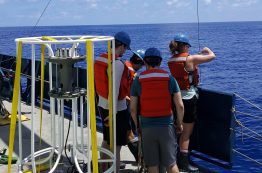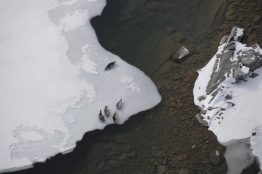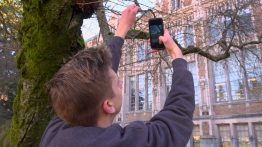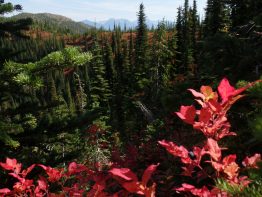Arsenic is a deadly poison for most living things, but new research shows that microorganisms are breathing arsenic in a large area of the Pacific Ocean. A University of Washington team has discovered that an ancient survival strategy is still being used in low-oxygen parts of the marine environment. “Thinking of arsenic as not just a bad guy, but also as beneficial, has reshaped the way that I view the element,” said first author Jaclyn Saunders, who did the research for her doctoral thesis at the UW School of Oceanography and is now a postdoctoral fellow at the Woods Hole Oceanographic Institution and the Massachusetts Institute of Technology.
Read more at UW Today »Chemical records in teeth confirm elusive Alaska lake seals are one of a kind
Hundreds of harbor seals live in Iliamna Lake, the largest body of freshwater in Alaska and one of the most productive systems for sockeye salmon in the Bristol Bay region. These lake seals are a robust yet highly unusual and cryptic posse. Although how the seals first colonized the lake remains a mystery, it is thought that sometime in the distant past, a handful of harbor seals likely migrated from the ocean more than 50 miles (80 kilometers) upriver to the lake, where they eventually grew to a consistent group of about 400.
Read more at UW News »UW students spearhead efforts to predict peak bloom for cherry trees
Each spring, thousands of visitors flock to the University of Washington campus to see the iconic cherry trees in the Quad. Class discussions, casual Frisbee tosses, lunchtime picnics and even wedding portraits all take place under the beautiful blossoms, which typically hit their prime in late March or early April. This year, they reached peak bloom on March 29. But there’s no easy way to predict when peak bloom will occur each year for the trees in the Quad.
Read more at UW News »UW tool maps huckleberries to help find endangered grizzly bears
A team of researchers from the University of Washington and U.S. Geological Survey have made used satellite images of Glacier National Park, to examine patterns in huckleberry plants that turn a brilliant red color each fall. Tracking where huckleberry plants live now — and where they may move under climate change — would help biologists predict where grizzly bears will also be found.
Read more at UW Today »Return of the wolves: How deer escape tactics help save their lives
Washington’s deer populations have begun to change their behavior to evade ever-increasing numbers of their most cunning predator, the gray wolf. Intriguingly, the escape tactics used by the two more common species – the mule deer and the white-tailed deer – vary greatly. Researchers from UW College of the Environment and other institutions found that when in areas populated by gray wolves, mule deer are spending more time away from roads, at higher elevations and in rockier landscapes than previously observed.
Read more at UW News »





